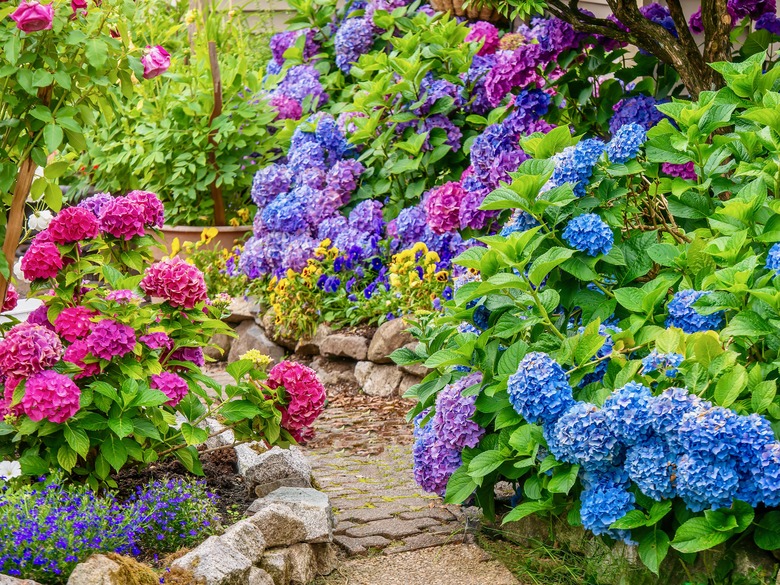How To Grow Hydrangea Seeds
We may receive a commission on purchases made from links.
Most people who grow hydrangeas (Hydrangea spp., USDA plant hardiness zones 3 through 9) prefer to grow store-bought potted plants or clippings, but if you want to take advantage of the plethora of tiny seeds hydrangeas drop each growing season, you can also grow the plant from seeds. Once seedlings are established, the process is the same as it would be for transplanting any other hydrangea plant.
Collecting Hydrangea Seeds
Collecting Hydrangea Seeds
About two to three months after hydrangea flowers bloom, they will begin to fade in color, and the petals will start to dry out. This is when you should clip the flower heads and place them in a large paper bag. Leave them for about a week to allow them to dry out before securing the top of the bag and giving it a good shake to free the seeds, which look similar to cracked pepper.
Sowing the Seeds
Sowing the Seeds
Hydrangea seeds can be sowed as soon as they are removed from the flower heads or can be stored in a plastic bag placed in a cool area until spring. To start the seeds, prepare a starter tray with moist, fertile potting soil. Sprinkle a small amount of seeds onto each tray. Do not cover the seeds with soil because they need light to germinate. Place the trays in a warm area with indirect sunlight to maintain even temperatures.
Water the soil periodically to prevent it from drying out. Seedlings should start to sprout in 14 to 30 days and will be ready to transplant into larger pots or outdoors when they have two sets of true leaves. The best time to transplant the seedlings is springtime, but if they aren't big enough until summer, keep them inside until fall because young hydrangea plants can die in the summer heat.
Transplanting the Seedlings
Transplanting the Seedlings
When you're ready to move your plants outside, take some time to find a good place for a full-grown hydrangea to thrive. Different varieties grow to different sizes, with some spreading up to 6 feet wide, so look to the parent plant to get an idea of how much space your plants will need when mature. Plant your seedlings at least 2 feet apart from one another to reduce the risk of mildew growth. Your planting area should have plenty of sun in the morning with dappled shade in the afternoon since the leaves can burn when they get too much sun.
Dig a hole that is at least twice as wide and as deep as the seedling's root ball and amend the removed soil as needed to ensure the hydrangea will be surrounded with adequately draining soil that has enough nutrients. Place the roots in the hole and gently fill the space around them with your amended soil. Mulch thoroughly and then water well.
Maintaining Your Hydrangeas
Maintaining Your Hydrangeas
Water hydrangeas at least once or twice a week for the first season outdoors to ensure the soil stays moist. After that, you shouldn't need to water the plants unless it is very dry outside. Fertilizer isn't necessary, but it can be applied up to twice a year to increase bloom count. Hydrangeas grow very quickly, sometimes as quickly as 25 inches in their first year, and you should be able to expect at least a few blooms the first spring after you plant them.
